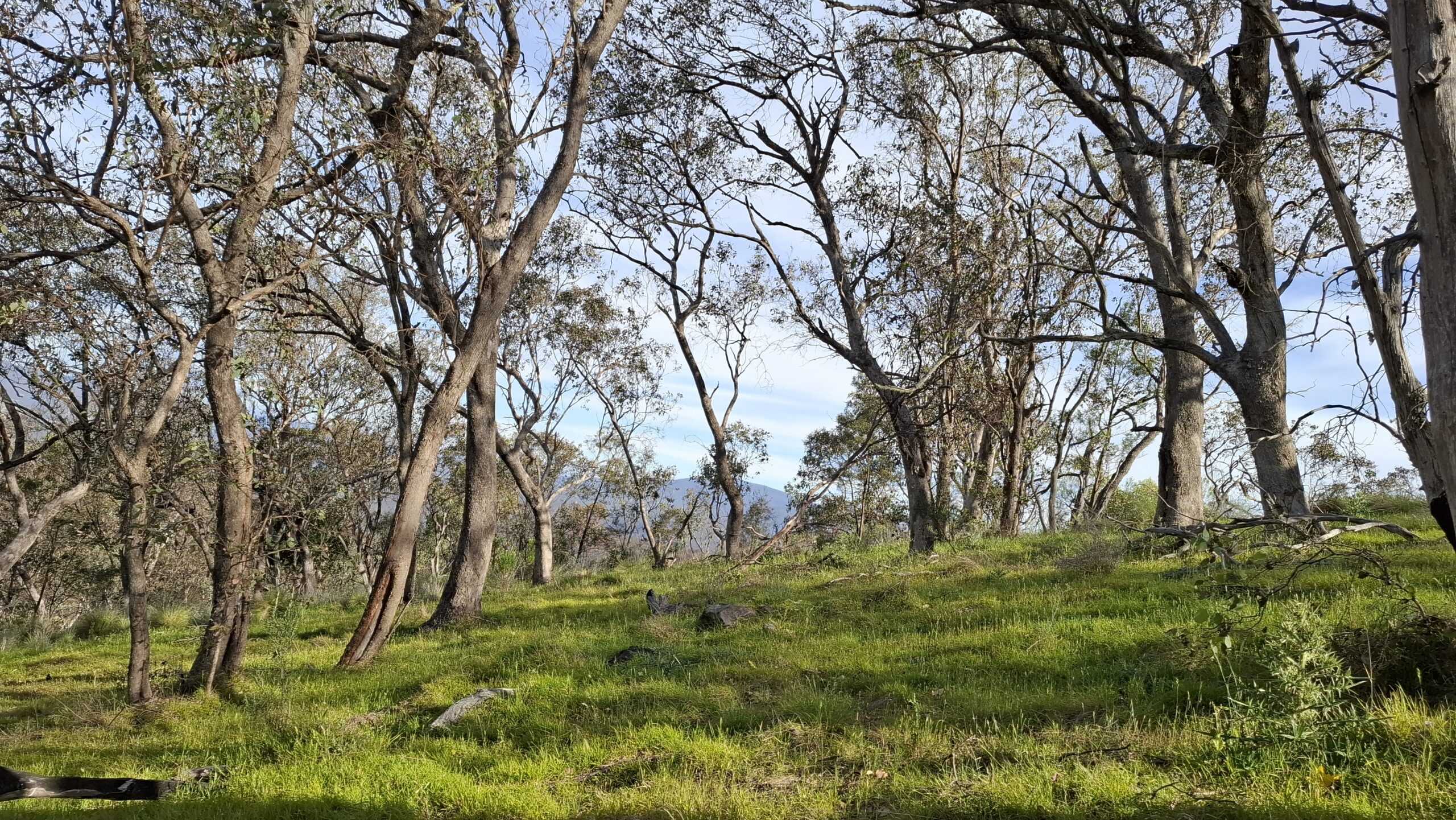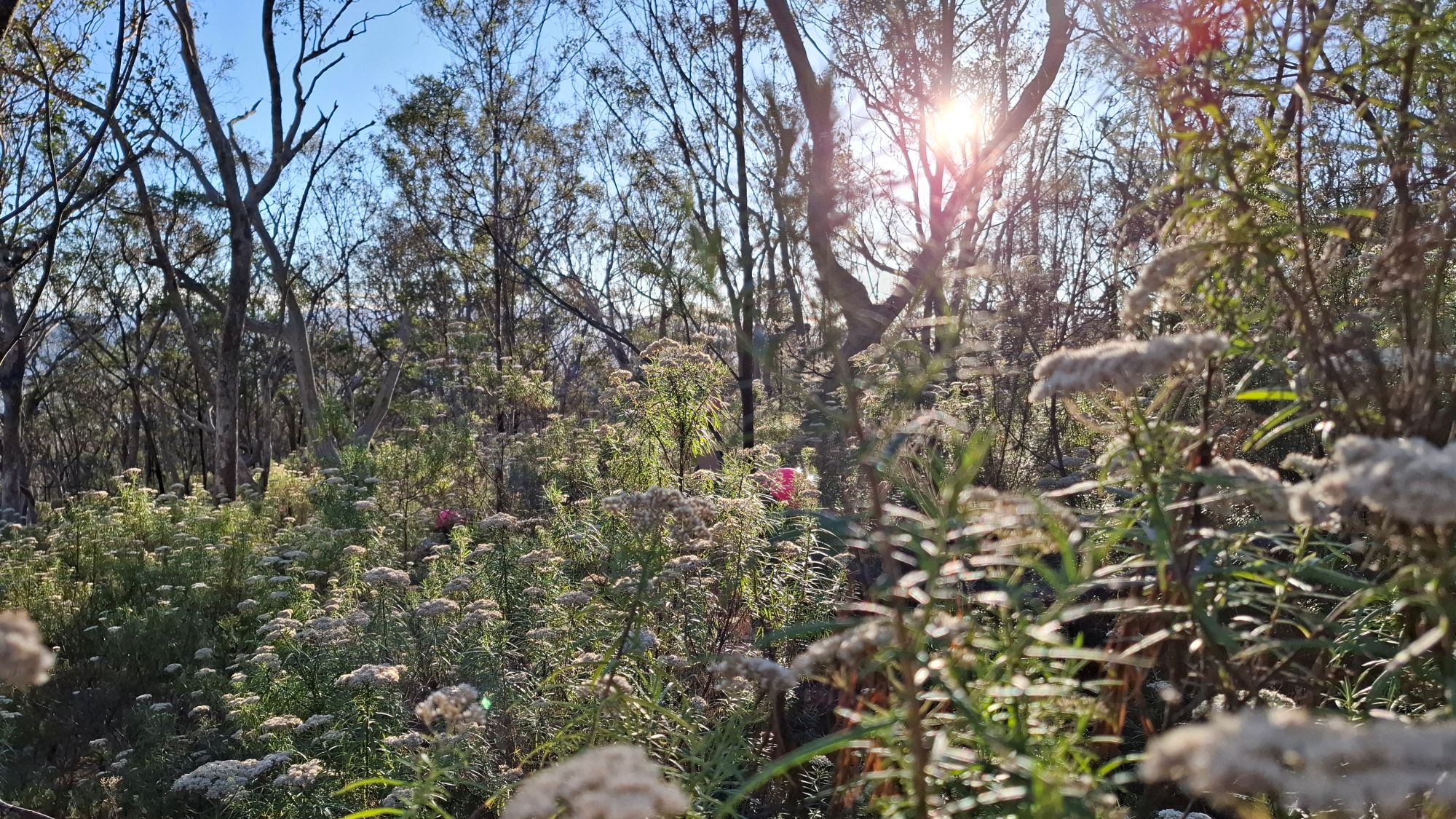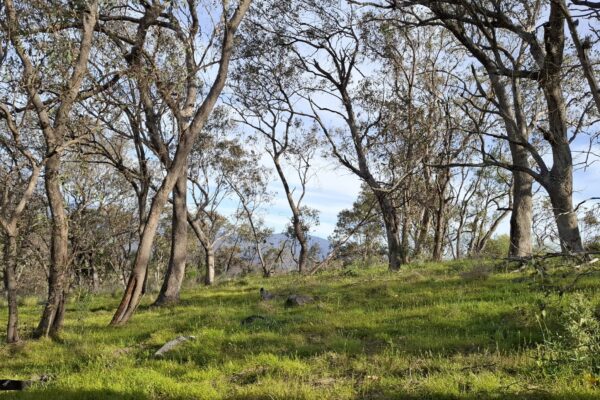First Nations cultural and ecological management
Location: Deddick Valley, Victoria
Landholder: Hewat family
Deddick Valley and the Hewat family
Sharing a border with the Snowy River National Park is a 371 ha property in the Deddick Valley owned by First Nations Elder and Gunnai Kurnai Croajingalong man David (Buzzy) Hewat and his wife Rose.
Buzzy has a deep cultural connection to the area now known as Deddick Valley and its surrounds. It is the place of his mother’s story and of his ancestors who walked the land before him. When the opportunity arose to buy a property in the Valley he seized the moment to create his legacy for his children, grandchildren and the generations that follow.
On his property, Buzzy uses cultural practices and Traditional Ecological Knowledge (TEK) to care for his Country, all the while teaching his children and grandchildren. This is how Buzzy’s legacy will be carried on through future generations of the Hewat family and those who wish to learn from him.
The current state of the property
The Deddick Valley property has a post-colonial history of uncontrolled wildfire, grazing, mining and tree ring barking throughout the forested area. This has resulted in an unhealthy forest that is overcrowded with wattle, dogwood and thick stands of eucalypts. In parts of the property many of the eucalypts are exhibiting canopy dieback and are unhealthy. This is likely due to overcrowding and competition, deteriorated soil quality and insect attack on already vulnerable trees.
Invasive species have also caused damage throughout the property and surrounds, including the adjoining National Park. This includes invasive animals such as pigs, deer, foxes, cats, rabbits and horses, as well as weeds such as thistles, blackberries sweet briar and mullein.
Since 2023, Buzzy and his family have been managing the property to improve cultural and biodiversity values as well as to create a more fire resilient landscape. Part of their approach is to introduce cultural burning into the landscape, focusing initially on areas adjacent to structures for fire resilience. The health benefits of cool burning can already be seen in areas that have had one or 2 burns with Buzzy reporting an increase in native animals such as spotted-tailed quolls and red-necked wallabies.
Invasive species control also forms a large part of the forest management on the property. Buzzy’s son, Nick, owns a hunting business and is a contracted by the Victorian Government and private landholders to control feral pigs and deer. Nick applies his knowledge of the land and animals to his trade and works on the family property to keep pig and deer numbers at bay. However, it remains an ongoing challenge as it will require a whole of catchment approach.
The Foundation’s work with the Hewat family
Buzzy applies Traditional Ecological Knowledge (TEK) and cultural practices to actively care for and manage his property, leaving a lasting legacy for his family and future generations. As part of this legacy, he aims to demonstrate the tangible environmental and economic benefits of incorporating First Nations cultural practices and TEK into forest management.
Buzzy has invited the Foundation to partner with him to demonstrate this value, and we are pleased that he has also agreed to serve as an advisor to the Foundation – sharing his cultural knowledge and experience in managing his land.
The Foundation will support Buzzy and his family in the ongoing management of their 370 ha property by providing technical forestry expertise, geospatial mapping, and values identification. This partnership will focus on holistic forest health, encompassing native plant and animal biodiversity, soil and water quality, invasive species management, and fire resilience.
Through this partnership, the Foundation has set up permanent study plots to research the effectiveness of applying TEK and cultural practices to manage threats such as invasive species and fire. Importantly, learnings from this project will be applied to other projects and will be shared with our First Nations Community of Practice group so they can also apply to projects separate to the Foundation’s work.
Initial project focus area: grassy woodlands
Ecological Vegetation Classes (EVC) are the standard unit for classifying vegetation types in Victoria. Using GIS mapping, Victorian Ecological Vegetation Classes (EVC) data, indicator species and First Nations and local knowledge, at least 3 types of EVCs have been identified on the property: grassy woodland, grassy dry forest and shrubby dry forest.
The focus of the Foundation’s work on the property will be the grassy woodlands EVC. This EVC is the predominate one bordering the inhabited areas of the property. Physical assets such as huts and sheds located within the EVC making it a priority area for Buzzy and his family to manage.
The grassy woodlands are described as open eucalypt woodlands with a ground layer of grasses and herbs, and sparsely distributed shrubs. However, large sections of this part of the property are dominated by dogwood, wattle and thick stands of unhealthy eucalypts. Some areas are nearly impenetrable due to the shrub layers and fallen debris.
The good news is that some areas of the property are starting to resemble the grassy woodlands that should be present after only short time of management by the Hewat family, and they will expand their management across a larger area in the coming years.
Part of the Foundation’s work on the property is to compare the managed areas with unmanaged areas to track the changes in the forest health. This is being done using plant and animal surveys, which will be the basis of supporting the Hewat family to participate in the Nature Repair Market through the application of accredited methods.
By combining family cultural knowledge with professional forest management skills, we aim to create a new, documented approach to forest health management.
Get in involved
We are interested in talking to organisations that are interested in supporting this project. As there are opportunities for research projects, we are also interested in talking to research organisations.
To contact us, use the form below.


- Comparisons between unhealthy, grassy woodlands, and grassy woodlands managed with cool burning on Buzzy’s property.













